PERFORMA HIDRAULIKA AMBANG DAN PINTU KLEP UNTUK SKENARIO REWETTING: KAJIAN PEMODELAN AWAL KANAL SUKA PINDAH SUAKA MARGASATWA PADANG SUGIHAN
Hydraulic Performance of Overflow Weirs and Flap Gates for Peatland Rewetting: A Preliminary Modeling Study of Suka Pindah Canal Padang Sugihan Wildlife Reserve
DOI:
10.29303/spektrum.v12i2.403Published:
2025-09-28Issue:
Vol. 12 No. 2 (2025): SPEKTRUM SIPILKeywords:
Kanal, Rewetting, Hidraulika, Flap Gate, AmbangArticles
Downloads
How to Cite
Downloads
Metrics
Abstract
The Padang Sugihan Wildlife Reserve is facing the threat of fires, which have a detrimental impact on the ecosystem of the Sumatran Elephant habitat. To mitigate this risk, this research aims to evaluate the hydraulic efficiency of overflow weir and flap gates as interventions for peatland restoration in the Suka Pindah Canal. 1D HEC-RAS modeling indicates that without control structures, tidal fluctuations at the estuary are ineffective in maintaining soil moisture. The scenario with a flap gate at the Suka Pindah Canal estuary can increase the volume of water by up to 115% compared to the existing condition, but this water structure requires well maintenance. In contrast, an overflow weir that is 1.5 times wider than the flap gate scenario proves to be more efficient, with a 72% better increase in water volume than the flap gate, as well as a simpler design. Further analysis shows that the upstream area of the canal, consisting of low-elevation land (natural ponds), has the potential to double the water retention capacity in the canal and land. These findings indicate that control structures are effective for rewetting efforts.
References
Balai Konservasi Sumber Daya Alam Sumatera Selatan. (2022). Rencana Pemulihan Ekosistem (RPE) Suka Margasatwa Padang Sugihan. Palembang: Direktorat Jenderal KSDAE Kementerian LHK.
Nusantara, W. R., Manurung, R., Lestari, U., & Padagi, S. (2023). Dampak sekat kanal terhadap fluktuasi muka air tanah pada lahan gambut di Kabupaten Kubu Raya—Provinsi Kalimantan Barat. Jurnal Ilmu Lingkungan, 21 (2), 393–402. https://doi.org/10.14710/jil.21.2.393-402.
Page, S., Rieley, J., & Banks, C. (2011). Aziz, M. N. (2011). Global and regional importance of the tropical peatland carbon pool. Global Change Biology, 17(2), 798–818. https://doi.org/10.1111/j.1365-2486.2010.02279.x.
Rendana, M., Idris, W. M. R., Abdul Rahim, S., Abdo, G., Almohamad, H., & Al Dughairi, A. A. (2023). Habitat suitability analysis in a natural peat swamp forest on Sumatran elephants using remote sensing and GIS. Forest Science and Technology, 19(3), 221–231. https://doi.org/10.1080/21580103.2023.2234463.
Safitri, R., Saharjo, B., & Basuki. (2024). The impact of canal blocking to reduce fire risks and carbon emissions on tropical peatland, Siak District, Riau Province. IOP Conference Series: Earth and Environmental Science, 1315, 012058. https://doi.org/10.1088/1755-1315/1315/1/012058.
Sasmito, S. D., Taillardat, P., Adinugroho, W. C. (2025). Half of land use carbon emissions in Southeast Asia can be mitigated through peat swamp forest and mangrove conservation and restoration. Nature Communications, 16, 740. https://doi.org/10.1038/s41467-025-55892-0.
Setiawan, A., Wignyosukarto, B. S., & Rahardjo, A. P. (2022). One-way flow system for improvement of the acid sulfate soil reclamation process in the Belanti II tidal swamp irrigation network, Central Kalimantan, Indonesia. IOP Conference Series: Earth and Environmental Science, 1091, 012053. https://doi.org/10.1088/1755-1315/1091/1/012053.
Taufik, M., Setiawan, B. I., & Van Lanen, H. A. J. (2019). Increased fire hazard in human-modified wetlands in Southeast Asia. Ambio, 48, 363–373. https://doi.org/10.1007/s13280-018-1082-3.
Triadi, L. B. (2020). Restorasi lahan rawa gambut melalui metode rewetting dan paludikultur. Jurnal Sumber Daya Air, 16(2), 145–157. https://doi.org/10.32679/jsda.v16i2.677.
Author Biographies
Kurniawan Putra Santoso, Universitas Gadjah Mada
Budi Santoso Wignyosukarto, Universitas Gadjah Mada
Rachmad Jayadi, Universitas Gadjah Mada
License
Copyright (c) 2025 Kurniawan Putra Santoso, Budi Santoso Wignyosukarto, Rachmad Jayadi

This work is licensed under a Creative Commons Attribution 4.0 International License.
You are free to:
- Share — copy and redistribute the material in any medium or format for any purpose, even commercially.
- Adapt — remix, transform, and build upon the material for any purpose, even commercially.
The licensor cannot revoke these freedoms as long as you follow the license terms.
Under the following terms:
- Attribution — You must give appropriate credit, provide a link to the license, and indicate if changes were made. You may do so in any reasonable manner, but not in any way that suggests the licensor endorses you or your use.
- No additional restrictions — You may not apply legal terms or technological measures that legally restrict others from doing anything the license permits.
Notices:
You do not have to comply with the license for elements of the material in the public domain or where your use is permitted by an applicable exception or limitation.
No warranties are given. The license may not give you all of the permissions necessary for your intended use. For example, other rights such as publicity, privacy, or moral rights may limit how you use the material.












